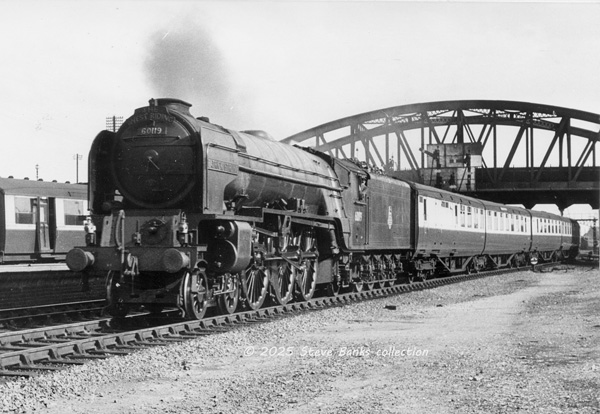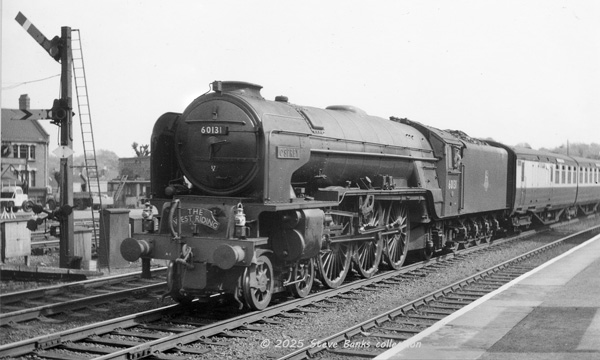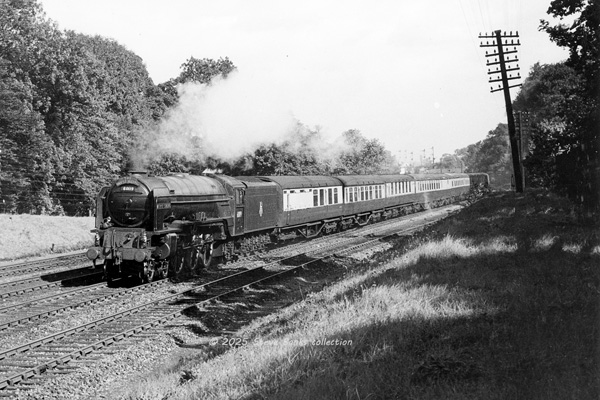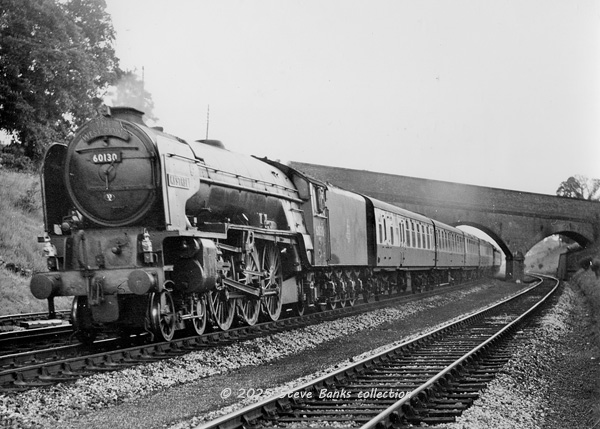The West Riding
The West Riding expresses haven't always been described kindly and when we wrote up the streamline expresses we gave several pages (p.47-49) to show how the stock was used in the post-War "The West Riding". Space didn't allow a more comprehensive account and it would be useful to correct an article on the subject in Steam World by Dr. Alan Earnshaw who wrote almost entirely about the schedules and that this train was "London based", going out in the afternoon and "stopped overnight in Yorkshire" and that slower schedules were the result of the poor condition of the main line after WW2 in which context he referred to a "notoriously slow approach" into Leeds Central without mentioning that the downhill gradient there of 1:50 was the most severe on the GNML and a train of 9 or so main line carriages had to be handled carefully into the terminus. This applied to all the incoming expresses and even the lighter one from Cleethorpes, for example, was treated the same.
The working itself was handled by the Top Link at Copley Hill in both directions, starting from Leeds Central at 7.50am as the principal early morning businessman's train to the metropolis, returning at 3.45pm (not the other way round) and it was given the streamline stock because the train now had a slower schedule than the pre-War "West Riding Limited" (which had to be run off-peak and was never available for the rush hour traffic). Now it was and 3 streamline twins, six carriages in the 9-car formation from Leeds were rostered. In terms of quality, this was only one step lower than the Pullmans, with no fee. Another aspect missed by Alan Earnshaw was that two of the twins caught fire in 1951 and had to be replaced by lesser stock and eventually BR Mk.1s. One thing he did get right was that the train was very popular!
On p.49 we ran a picture of the original train and its three Gresley twins in 1950. Here are some later illustrations with, regrettably, inaccurate dates. I have checked the images at a very high magnification and these are my findings:

Copley Hill's Peppercorn A1 No 60119 Patrick Stirling takes the morning London-bound express through Peterborough on a sunny day with the sleek streamline twins to the fore. This train was for a long time kept spotlessly clean. Leading are:
BTO-TO |
3rd open brake-3rd open |
Gresley streamline twin |
FO-FO |
1st open-1st open |
Gresley streamline twin |
These two twins were destroyed by the fire on 14th July 1951 so the date on the back of a modern print of "FEB 1952" cannot be right and may actually have been Feb 1951? Photo: Patrick Kingston.
Click on the image for an enlargement

No location or date I'm afraid but clearly from the same period with the leading streamline twin BTO-TO clearly visible behind Copley Hill's 60131 Osprey. Photo: Transport Treasury.
Click on the image for an enlargement

The return working at Potters Bar behind A1 No 60119 Patrick Stirling again. In this direction the streamline stock was at the far end with the Bradford portion (detached at Wakefield) behind it and cannot be seen:
BTK |
3rd brake |
63' Thompson |
TK |
3rd |
63' Thompson |
FK |
1st |
61'6" Gresley |
TO-RT |
3rd open-3rd restaurant |
Gresley streamline twin |
FO-FO |
1st open-1st open |
Gresley streamline twin |
Remainder cannot be seen.
This too is stated as "1952" and can only have been early summer of 1951 or an earlier year. Photo: SLS 18613.
Click on the image for an enlargement

Another picture of the return working, this time behind Copley Hill's A1 No 60130 Kestrel taken in July 1956 near St.Neots when a single streamline twin remained among more modern stock.
BTK |
3rd brake |
BR Mk.1 |
TK |
3rd |
BR Mk.1 |
FK |
1st |
63' Thompson |
TO-RT |
3rd open-3rd restaurant |
Gresley streamline twin |
Remainder cannot be seen but is credible for 1956. Photo: ER Wethersett, BR(E), author's collection.
Click on the image for an enlargement


